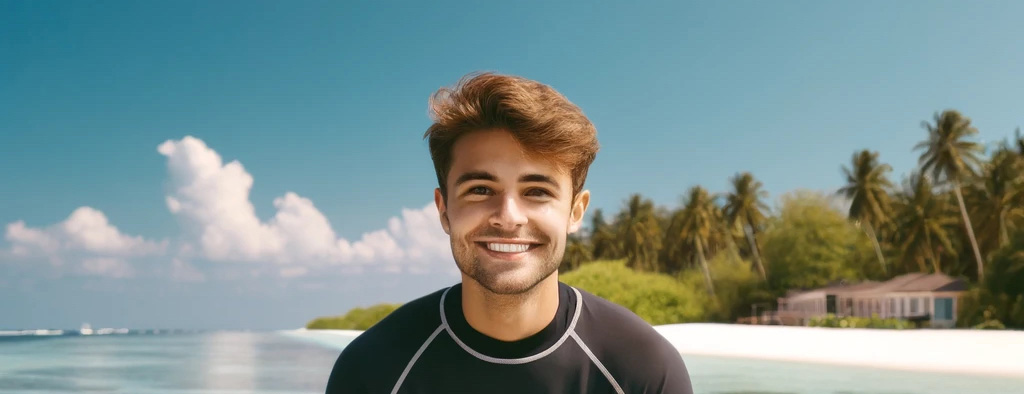
Other factors, beyond that of tides, affect the movement of large bodies of water; it is important to understand what these factors are, how these currents impact the ocean environment and what affects they have on diving.
The ocean’s temperature and saline content are two factors that together directly affect the density of salt-water, which in turn cause changes in the ocean’ s circulation and causes currents. This is called Thermohaline Circulation and is one of the causes of mass water movement in Earth’s oceans. Currents due to thermohaline circulation are very slow, and occur at all depths.
Due to the Earth’s rotation, air circulating in the atmosphere is deflected to the right in the northern hemisphere and to the left in the southern hemisphere. This results in curved, semi-circular wind patterns, and is called the Coriolis Effect.
One of the primary causes of ocean currents are these global wind patterns that drag on the water’s surface and cause the water to move in the direction that the winds are blowing. In the northern hemisphere, these currents move from near the equator in a clockwise direction. In the southern hemisphere, the currents move from near the equator in a counter-clockwise direction.
The Coriolis Effect, due to the Earth’s rotation, also applies to the ocean’s water movement. Combined, the wind and water create global currents that are significant and predictable. Interestingly, none of the currents actually originate at, or cross the equator because the Coriolis Effect is not present at the equator.
The temperature of the water moved by these currents is typically warmer near the equator and remains relatively warm as it moves, affecting the climates of the coastlines they pass. As the water comes to the end of its cyclical path, it has cooled, ready to start the process over.
A higher variable atmospheric pressure can also cause localized currents. The higher atmospheric pressure essentially puts additional pressure on the water, causing it to move as a current. This is evident in areas such as straits and reef passes where the water is forced through narrow channels.
Divers are more prone to encounter and be affected by coastal currents and rip currents.
Coastal currents, also called longshore currents, are caused when waves reach the coastline, or breaker zone, which causes them to release a strong surge of energy. This energy generates a current that runs parallel to the shoreline; hence, the term longshore. These currents often move with a force strong enough to prevent a diver from swimming into them for a sustained amount of time; though, they are perfect for drift diving, which will be discussed in a moment.
A rip current is formed when wave energy is converted into currents that run parallel to the shore, towards each other, and collide. The opposing energy of the currents pushes each other away from the shore. As the currents move away from the shoreline, the combined energy forms a trough by essentially digging out the sea floor due to the surge in outbound energy. Depending on the rip current’s energy, these troughs, or channels can extend anywhere from 30 to 800 meters (100 to 2500 feet) into the ocean.
Rip currents can often be identified from the surface, as the flow of water converging in the trough forms a darker colored fan that may also cause surface chop. In many cases, the dark and murky silt, sand and debris the currents drive out to sea can been seen as well. Also, by their very nature, rip currents will typically prevent waves from reaching the same height as those on either side of the rip current.
This happens because the rip current has dug out a channel preventing the wave energy from interacting with a bottom that is as shallow as the bottom on either side of the through. Also, the outgoing energy of the rip current counteracts the incoming energy. These two events tend to cause frothy water beyond the area of the breaker line. Many of these visual signs can be disrupted by the presence of a strong wind. However, lifeguards and search and rescue personnel in many coastal areas around the globe will place red flags on the beach where a known rip current form.
Of course, it is best to stay away from a rip current; but, if you were to ever find yourself stuck in one, simply swim parallel to the shoreline until you swim free and back to shore.